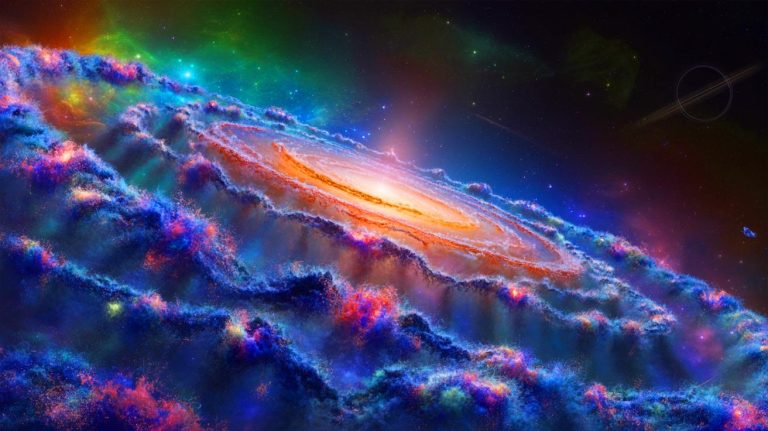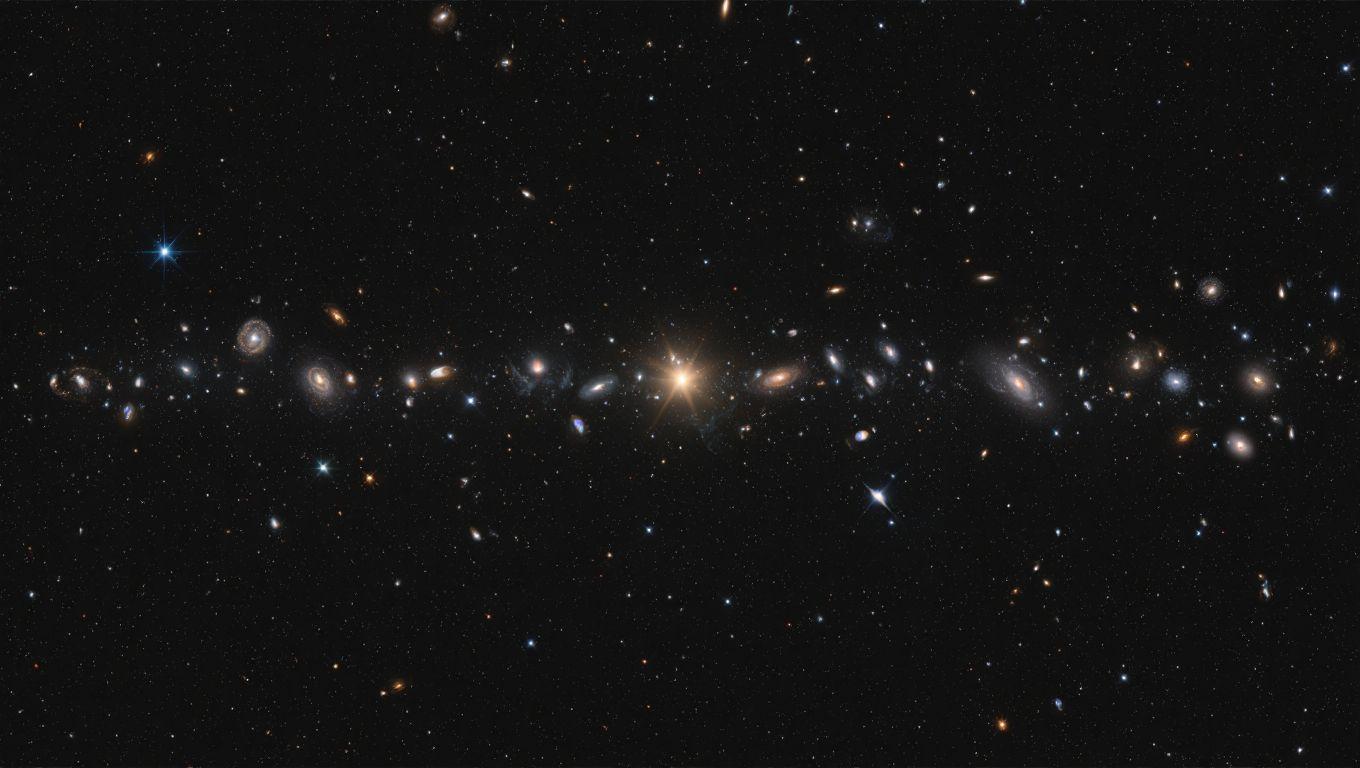| IN A NUTSHELL |
|
The cosmos, vast and mysterious, never ceases to surprise us with its wonders. One of the most fascinating discoveries that continue to intrigue scientists is the Great Wall of Hercules-Corona Borealis, a colossal structure challenging our understanding of the universe. Recent studies using gamma-ray bursts (GRBs), the most energetic explosions known, have revealed that this structure is even more extensive than previously thought. As we dive deeper into this astronomical marvel, we uncover insights that could reshape our comprehension of cosmic structures.
Unveiling Cosmic Structures Through Gamma-Ray Bursts
Gamma-ray bursts, or GRBs, are the universe’s most luminous explosions. These phenomena occur during the formation of a black hole, either from the collapse of a massive star or the collision of two neutron stars. The resulting events emit jets of particles traveling at nearly the speed of light. As these jets interact with the surrounding environment, they produce gamma and X-rays that are detectable across vast cosmic distances.
By mapping GRBs, astronomers can pinpoint regions in the universe where matter is concentrated. This technique allows the detection of galaxies too distant to be observed directly. Thus, GRBs serve as cosmic beacons, illuminating the large-scale structure of the universe and revealing galaxy clusters like the Great Wall of Hercules-Corona Borealis.
How the Great Wall Challenges Cosmological Models
The Great Wall of Hercules-Corona Borealis spans approximately 10 billion light-years, posing significant challenges to the cosmological principle. This principle asserts that the universe is homogeneous and isotropic on large scales. However, according to this concept, no structure should exceed 1.2 billion light-years, a limit imposed by the universe’s age. The Great Wall, much larger than this threshold, suggests that matter is not evenly distributed.
This discovery may necessitate revising cosmological models. Some theories, such as those incorporating more substantial primordial fluctuations, could potentially explain the existence of such vast structures. Consequently, the Great Wall represents a hurdle for our understanding of the universe, prompting scientists to explore new theoretical avenues.
The Role of Future Missions in Expanding Our Understanding
Looking ahead, missions like the European Space Agency’s THESEUS promise to broaden our understanding of cosmic structures. With enhanced sensitivity, these missions could unveil the full extent of the Great Wall and other similar formations. The ability to detect fainter and more distant GRBs will enable scientists to map the universe’s large-scale structure with unprecedented precision.
As new data becomes available, our comprehension of cosmic phenomena will continue to evolve. The insights gained from THESEUS and similar projects will be crucial in refining our models of the universe, potentially revealing new aspects of its formation and evolution.
Implications for Cosmology and the Scientific Community
The study of the Great Wall of Hercules-Corona Borealis, now accessible on arXiv, opens new perspectives on the formation of large cosmic structures. It underscores the importance of GRBs as tools for exploring the universe’s boundaries. As we delve into these findings, the scientific community is prompted to reconsider established theories and pursue innovative research directions.
This exploration not only challenges current cosmological models but also inspires curiosity and wonder about the universe’s true nature. As we continue to investigate, we may uncover further surprises that defy our expectations and broaden our horizons.
The discovery of the Great Wall of Hercules-Corona Borealis and its implications for our understanding of the universe are profound. It highlights the dynamic nature of scientific inquiry and the ever-evolving quest to decipher the cosmos. As we stand on the brink of new discoveries, one must wonder: what other cosmic secrets are waiting to be unveiled?
Did you like it? 4.4/5 (23)








Wow, the universe never ceases to amaze! How did they even measure something that big? 🤯
What if there are more structures like this out there? Mind blown! 💥
How does this challenge the cosmological principle exactly? Need more details.
I’ve always thought the universe was too big for us to fully understand. This just proves it!
Maybe aliens built it? Just kidding… or am I? 👽
Is there a chance this is just a misinterpretation of data?
Can’t wait to see what THESEUS finds next!
So, what’s the next step for astronomers after this discovery?
It’s discoveries like these that make me want to study astronomy. 🔭
Wow, just when you think we know the universe… it surprises us!
How reliable are these gamma-ray burst measurements?
Great article, but I need a cosmic map to follow along! 🗺️
Is it possible that our current physics models are just too limited?
Is it just me, or does the Great Wall sound like something out of a sci-fi movie? 🚀
Is anyone else thinking about how tiny we are in the grand scheme of things? 🌌
Can someone point me to more resources on GRBs? Fascinating stuff.
This is why space exploration is so important. Who knows what we’ll find next?
How does this discovery affect dark matter theories?
What’s the significance of the name “Great Wall of Hercules-Corona Borealis”?
I’ve always wondered if the universe has more surprises in store for us. Clearly, it does!
33 billion light-years is just… wow. Hard to wrap my head around that. 🤯
How do scientists even start to comprehend something so massive?
This read was a rollercoaster of emotions for a space nerd like me! 🎢
Does this mean our universe is older than we thought?
Is this “Great Wall” made up of galaxies or something else?
Could this discovery impact the search for extraterrestrial life?
Are there any upcoming missions besides THESEUS that will look into this?
I’m skeptical. How do we know this isn’t just an error in our measurements?
Can someone explain gamma-ray bursts in simpler terms? I’m lost. 😅
Are there any implications of this discovery on our everyday lives?
Why haven’t we heard about this “Great Wall” before? Seems like a pretty big deal. 🤔
33 billion light-years?! That’s a number I can’t even begin to comprehend.
Interesting article, but a bit too technical for me. Could use a glossary!
Does this discovery affect the Big Bang theory?
Thank you for this enlightening read. The universe is truly a mysterious place.